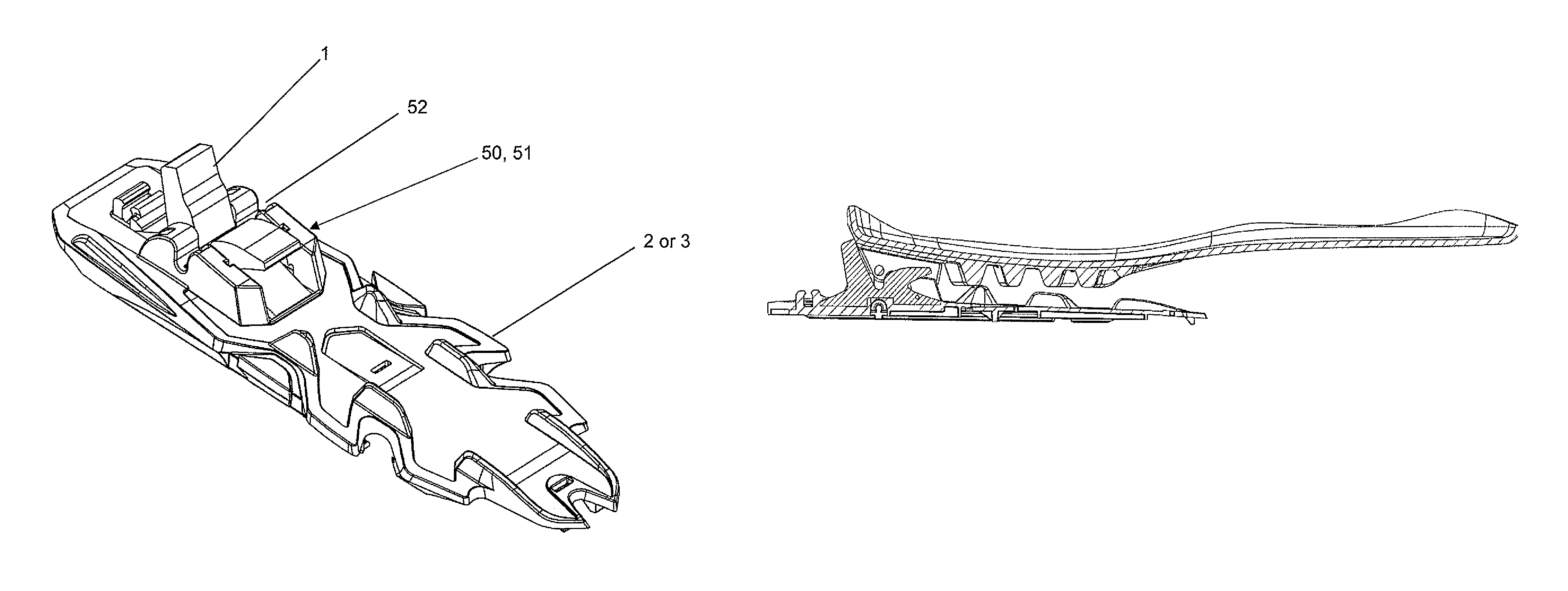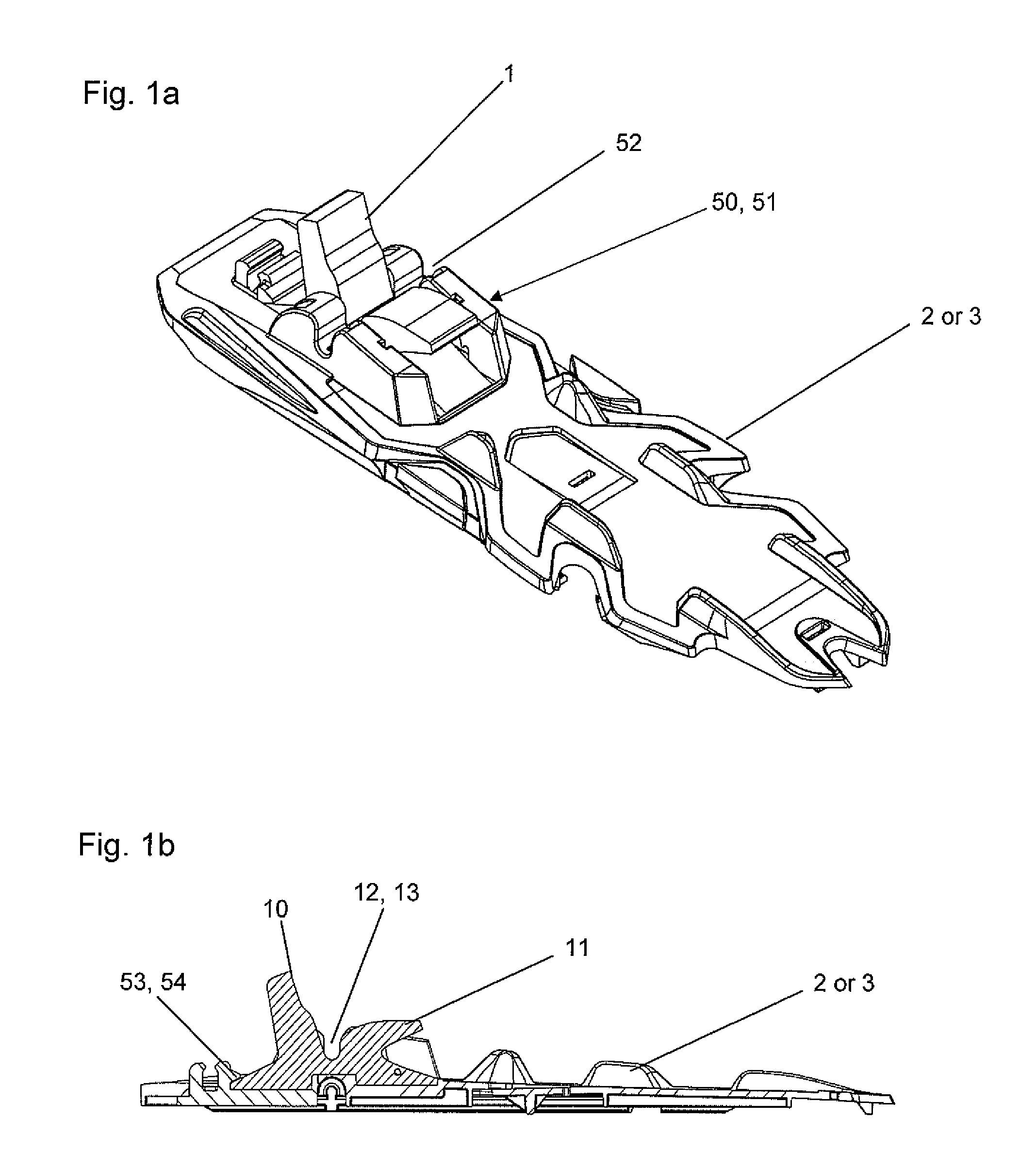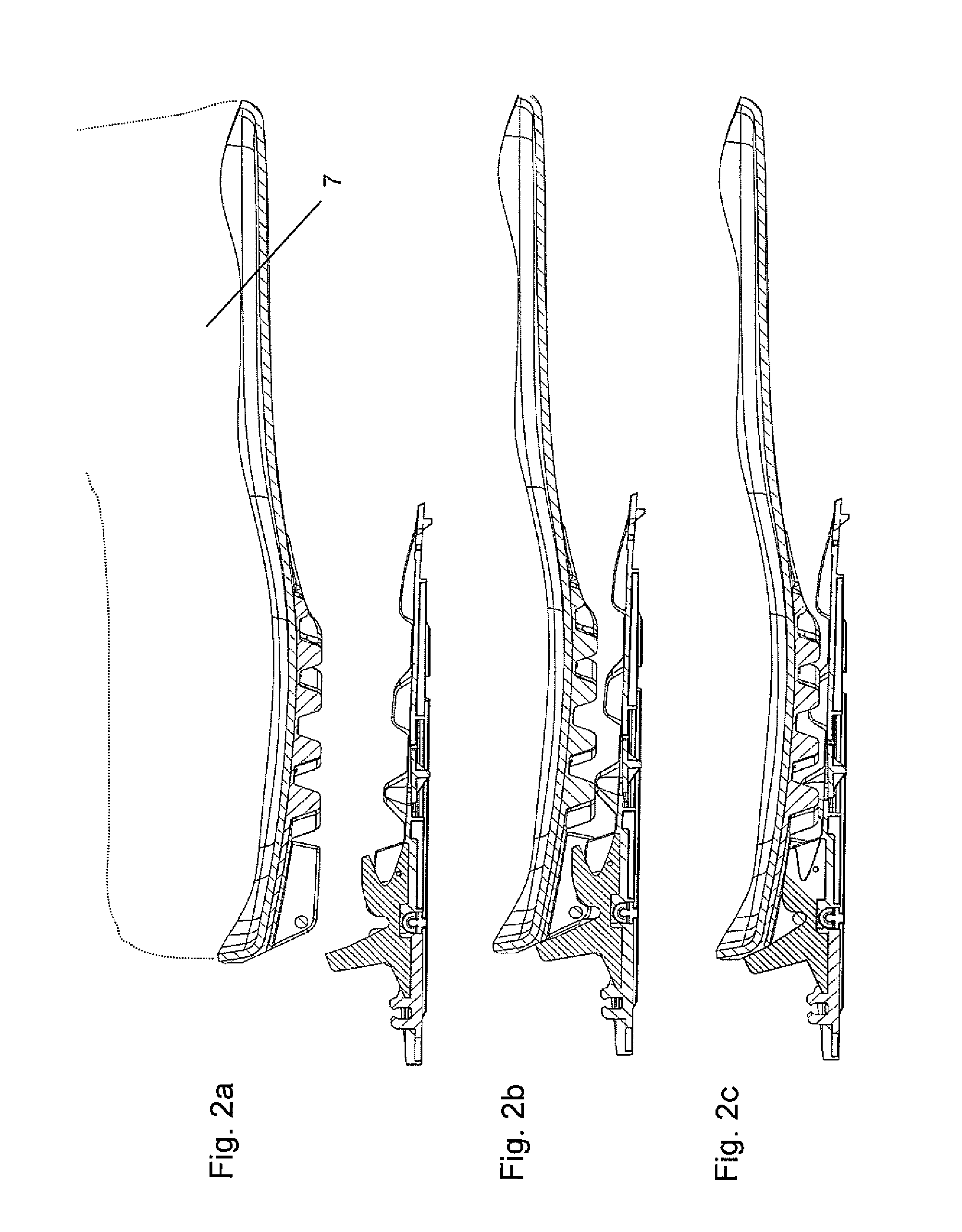Flexor with extending flexor arm
a flexor and flexor arm technology, applied in the field of flexors with extending flexor arms, can solve the problems of rarely reached force versus displacement curves, extreme pain, and steep gradients, and achieve the effects of reducing stress on the skier, increasing the maximum rotation of the ski boot, and increasing the efficiency of skiing action
- Summary
- Abstract
- Description
- Claims
- Application Information
AI Technical Summary
Benefits of technology
Problems solved by technology
Method used
Image
Examples
Embodiment Construction
[0038]Looking at FIG. 1a, a ski binding 2 incorporating the flexor 1 of the current disclosure is shown in perspective form. As can be seen from the Figure, the flexor 1 is intended to be positioned within the binding 2 in the region surrounding the attachment of a ski boot 7 to the binding 2. Whilst FIG. 1a shows the flexor 1 integrated with a ski binding 2, it is also conceivable for the flexor 1 to be incorporated with a mounting plate 3 for a ski-4. The ski binding 2 and mounting plate 3 as well as the flexor 1, are intended for use with cross country or touring skis-4. In cross country or touring skiing the skier is attached to the ski 4—in a rotatable manner. In order to allow for appropriate skiing action, it is necessary for the ski boot 7 to be fixed to the ski-4, usually by means of the binding 2 or mounting plate 31 and to be able to rotate around the toe portion of the ski boot 7.
[0039]As has been discussed above, rotation of the ski boot 7 during skiing is typically per...
PUM
 Login to View More
Login to View More Abstract
Description
Claims
Application Information
 Login to View More
Login to View More - R&D
- Intellectual Property
- Life Sciences
- Materials
- Tech Scout
- Unparalleled Data Quality
- Higher Quality Content
- 60% Fewer Hallucinations
Browse by: Latest US Patents, China's latest patents, Technical Efficacy Thesaurus, Application Domain, Technology Topic, Popular Technical Reports.
© 2025 PatSnap. All rights reserved.Legal|Privacy policy|Modern Slavery Act Transparency Statement|Sitemap|About US| Contact US: help@patsnap.com



